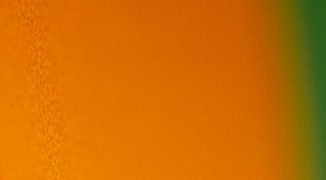With a name like Tom Collins, getting into booze is basically fate. For Dr. Collins of Washington State University, the bug bit during college. Though he didn’t study wine sciences during his undergrad days at Cornell University, he started visiting vineyards close to his upstate New York campus.
After spending some time in the military and graduate school for food science and then agricultural and environmental chemistry, he ended up working in research and development for a couple wineries.
While he was working at LangeTwins Winery, he started a conversation with Treasury Wine Estates. “They were interested in having someone do some research on how best to work with their in-house cooperage to get the kinds of barrels their winemakers were looking for,” says Collins.
They made out a deal in which Collins would do the research and use it as the basis of his PhD at U.C. Davis. To get started, they had to figure out a means of communication between the winemakers and the coopers. To do so, Collins dug into the science behind the oak, aroma, and flavor chemistry. In Collins’ words, “the project looked at how the coopering, particularly the toasting process, affected the chemistry of the barrels and the wine.”
Once his dissertation was complete, he was “interested in seeing how else – where else – I could go with the project. What the other things were that would follow logically from understanding the interaction between oak barrels and wine,” he says. “One of the obvious things is to look at whiskey or other spirits that are aged in barrels as a follow on.”
But studying whiskey after studying wine comes with some difficulties. “Most wines are 12-15% ethanol, while most spirits are going into barrels at 60-62% ethanol,” says Collins. “It’s a completely different solvent system.” Since distilled liquor more ethanol and less water, it dissolves different compounds.
Distilled spirits are also affected differently by barrel aging. Every time a liquor is distilled, imperfections and flavor molecules are stripped out. “In wine, there are all sorts of things that those wood components can interact with,” he says. “In whiskey, the suite of compounds that are already present in the spirit is less than in wine.”
In addition to dissolving different things, whiskey barrels are prepared differently than their wine counterparts. “Whiskey barrels are charred rather than toasted, so there’s a different starting point for the barrel itself,” says Collins.
Though he believes that some of the larger distilleries “probably have some of this information already,” he hopes that his research will help craft distillers who don’t have the same resources. “This research could be helpful for them to understand what’s being extracted and how long those things take so they can get the characters they want without getting too much woody character.”
Once this paper was announced in late 2013, Collins was greeted with a host of interview requests. After that point, he’s been working on barrels’ impact on spirits other than whiskey. “We’re also doing some work trying to correlate chemical composition with sensory perception,” he says. “That’s one of the key parts of the whole work. We’ve done some work looking at chemical composition, but can we make the connection between the chemical composition and what people are actually smelling or tasting in those products.”
Knowing why we’re tasting what we’re tasting? We’ll drink to that.





